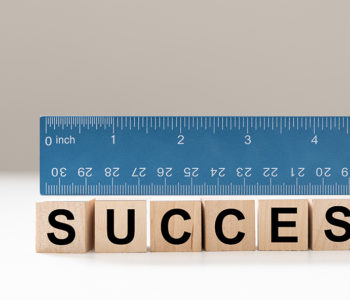 Productivity
Productivity Tracking Personal Progress Better
Productivity
How do you measure your growth? What metrics do you trust? What tools do you use to help record and display those metrics? Do you apply it only to things like personal fitness, budget, or some other specific area of your life?
In most areas of business and critical life areas, we use data to track how we are doing, whether it is a general sense of position or progress towards a goal. Why should we, therefore, treat the rest of our life any differently? Now, I am not talking about making your life all about work.
Consider this, setting goals is something everyone sees as a productive task, but many don’t consider how they will measure the ability to achieve that goal. They will immediately start breaking down the problem statement as they see it into a number of actions or steps to take that they believe will lead them to a state of completion.
For straightforward and simple goals this makes sense. For longer-term and more complex goals this fails almost every time. After all, look at all of the new year’s resolutions that get broken every year because they were not considered from a stance of how to actually achieve what the person would consider a level of success to saying that they were done.
Deciding What to Measure
Well-defined goals are something that we could discuss at another time, and also the ability to break things down and the strategies to do so. What I would like to focus on here however is how to effectively define how to measure a thing, to quantify how far you have reached and how much further you may have to go before claiming that victory.

In my experience not all metrics are created equally, part of this is due to the methodology of the measurement process. Take for example measuring when people see an ad on a website. You could record every time it is delivered to a client device, or when someone interacts with that component, both methods will deliver a certain amount of information that can be trusted and are even used in many business decisions by large companies.
How we feel we are progressing is not the same as actual progress.
-DevTinker
However, both approaches are flawed, the first will inflate the number of instances of something being seen since there is no guarantee that the person could actually see the ad, it is all dependent on where on the page and the approach that page was initially developed to determine if it was even visible to the customer. The second is causing so much of the valuable data to be lost since not everyone would interact with the ad and thus that population that may be available for retargeting is never fully processed.
While I don’t equate personal progress to the same expectation of the use case described, I do fully expect that for something to be properly measured, you have to consider the way you measure it and if it is giving you the data that is necessary to make the right decisions on.
Considering metrics on fitness, most people equate being fit with losing weight or reaching a particular body mass index value. While they have some effect on getting to that state, they are far from the best measurement methodologies. People expect that those data points will indicate success criteria, whereas they are the most notoriously under-tracked and in most cases are not indicative of reaching the goals that they were set to measure.
Metrics for progress
Expecting a metric to define success criteria is a very narrow view of what you are really trying to achieve. After all, when evaluating anything else in your life do you use only one dimension to determine something’s value? Look at your clothes for example, why did you choose those items to wear? For every goal that you have set for yourself, you should never rely on one metric to show progress since that would limit your perspective on what that success means.
Let’s take another example, you are looking to improve your skills. Logically you would look for a class or some other educational method. What would show that you have improved the skill? Most would look at completing the associated course and gaining the requisite certification. Does that mean that the skill was improved or that you could regurgitate the information imparted by the course?
For myself, earning the certification would only be a part of the success criteria, another would be in how I apply that knowledge to future projects or earn some reward for my efforts. A lot of what we try to measure for ourselves is not couched in firm metric methodologies but is more of the subjective kind. How we feel we are progressing is not the same as actual progress. After all, we don’t know how far we have to go till we actually get there and can look back on the journey to help put it into context.
Some guiding principles in choosing a metric methodology:
- What is to be measured is just as important as how it is measured.
- Measure multiple dimensions that relate to the goals that you are tracking.
- Metrics are there to tell a story, not just define the place you have reached at that point in time.
How to keep track
With many of us carrying a computer in our pocket, this has become a much easier thing to achieve. I will not be going into all of the applications that are available for specialized metric tracking out there, but will instead put forth some conjecture about how to get to the point where the story being exposed by the metrics that you use becomes useful in really tracking progress.
Whether it is tracking the development of a habit, measuring how much weight has been lost, how fast you have run that last mile, how much you have earned with your side hustle, or how well your social media empire has spread, how we derive insight helps us to determine that next step. In this consistency is king, after all, if you are not generating data that you can trust is accurate you will be less likely to trust that same data to inform your next actions towards reaching that next level.
Telling the Story
Consider every measurement activity as an input into the full narrative, just like any writer has to assemble the parts into a cohesive whole you need to do the same with your personal progress story. Putting this together on a regular basis is not without effort, so be sure to allocate some time to do this, I recommend including it as part of your regular review practices. You hopefully are doing this at least weekly if not more frequently, if not, I would seriously consider this as a step to truly making progress toward any future goals that you may want to set.
Putting the data into a matrix to help you visualize the data visually is something that I would recommend because reading numbers versus looking at a trusted trend line always seems a better and more valuable representation of the data than anything else. After all, pictures are worth a thousand words and can tell a story much quicker, much faster than going number blind looking at the raw data.
Defining Accountability
This last item is less about tracking personal progress and more about how to maintain the momentum of whatever progress has been made to this point. Having a way to be accountable for the results makes the entire process and thus the results more meaningful. That is why gamifying your activities makes it easier to complete activities or having a gym buddy will help you lock in that habit as a regular routine.
Check out more thoughts on gamification around your life.
Once you have the multi-dimensional metrics defined for your goals and really understand what you are trying to progress toward, make sure to lock it all in by defining how you will keep yourself accountable for the progress being made.

Find this content helpful, check out more from our productivity series, and let us know if you want to hear about more by contacting us!







